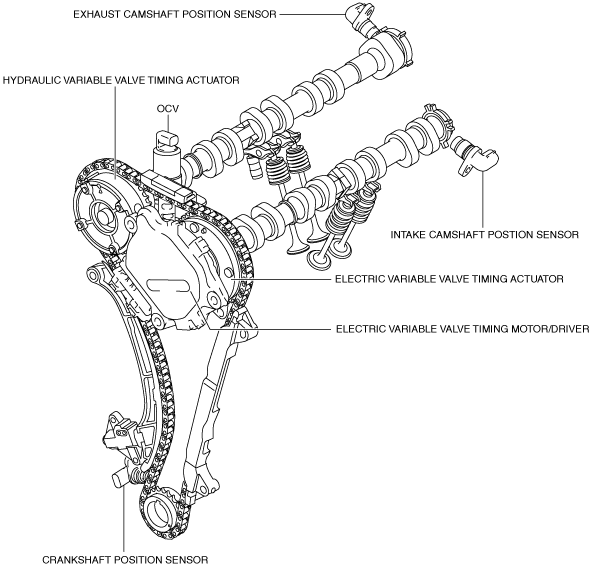 |
am3uun00002434
VARIABLE VALVE TIMING MECHANISM [SKYACTIV-G 2.0]
id0110h2002000
Outline
Structural View
am3uun00002434
|
Structure
|
Part name
|
Function
|
|
Hydraulic variable valve timing actuator
|
The phases of the exhaust camshaft and crankshaft are changed according to the hydraulic pressure.
|
|
Electric variable valve timing actuator
|
Receives the operation of the electric variable valve timing motor/driver to change the phases of the intake camshaft and crankshaft.
|
|
Electric variable valve timing motor/driver
|
Operates the electric variable valve timing actuator based on the signals from the PCM.
|
|
OCV
|
Operates according to the energization current from the PCM and switches the hydraulic passage to the hydraulic variable valve timing actuator.
|
|
Intake camshaft position sensor
|
Inputs the intake camshaft position signal to the PCM.
|
|
Exhaust camshaft position sensor
|
Inputs the exhaust camshaft position signal to the PCM.
|
|
Crankshaft position sensor
|
Inputs the crankshaft position signal to the PCM.
|
Operation
At engine start
Light/medium load range
High load range